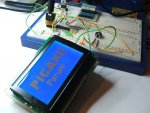From his profile I assume Nick is still at school so I can fully understand the possible budgetry limitations.
And a tight budget applies to many of us ... though some are tighter than others

But irrational penny-pinching sincerely worries me.
1. In normal cases there are reasons why something may be super-cheap.
a) Slave labour.
b) Cheap / sub-standard parts (including test-lead insulation and structure).
c) Poor design and/or not made to a good standard.
d) Not tested.
e) No warranty / support.
f) Retailer buys them so cheap that the few % who have the balls to complain can be sent a replacement and profit isn't knocked.
(Often the hassle/expense of returning a <£5 meter is too great - the retailer knows this!! The retailer is far more commercially savvy than the average punter , who strangely seems happy to keep these people in a decent lifestyle.)
2. Safety.
Something super-cheap may also be dangerous.
If you start piddling around with mains or big batteries and with no bl**dy fusing then you could be in trouble.
I am genuinely shocked (no pun) that a reputable dealer like Rapid are selling unfused DMMs as linked by Nick in post 195 . The structural quality must be terrible.
Surely your health/family/life/house/property is worth more than £10??
To People with dosh; stop being so damned tight!!
3. Quality.
Can you really trust a cheapo meter? People using them quote all sorts of results as though they are accurate.
I wouldn't trust them as far as I could throw them.
If you can't trust then it is useless.
4. Handling.
I , in a moment of madness, a few years back bought a cheapo as a throw-away back-up.
The response (update) time was so slow and wobbly that I went mad and threw it in the bin.
It was certainly throw-away ... after 2 days.
Christmas is coming up. I would strongly suggest that people send a letter to Santa for something of reasonable quality from a good supplier.


![P100911_15.36_[01]_small.jpg](/data/attachments/7/7844-3b21b6706d6fc35a7bf06090f2d24910.jpg)

